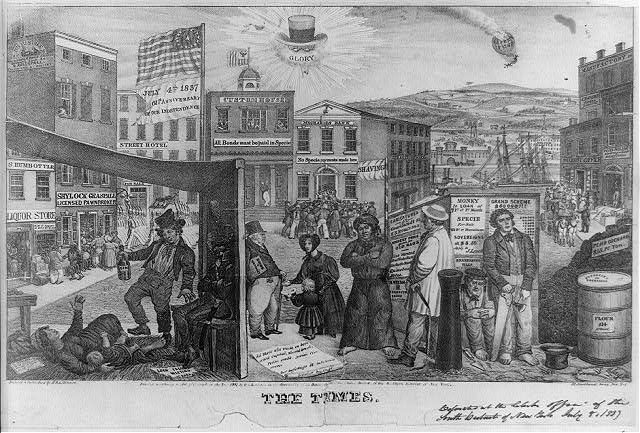
Most believe the roots of the Panic included economic policies of President Andrew Jackson, who did not renew the charter of the Second Bank of the United States and issued an executive order called the Specie Circular, which indicated that after August 15, 1836, the US Government would not accept anything but gold and silver specie (actual gold or silver) or paper notes from banks backed by specie as payment for sale of public lands. Jackson had been convinced that the land was being paid for with stale bank notes of questionable value.
Martin Van Buren was inaugurated as the President in March of 1837, and he did not change course. Banks began issuing excessive paper money not backed by bullion reserves, and inflation was rampant.
There are others who blame the non-renewal of the Charter of the Second bank, with a series of other issues. These issues increased money and credit supplies, while decreasing interest rates, coupled with improper investment decisions.
Regardless of the exact causes, New York City banks began to accept payment in only gold and silver, which resulted in significant and sudden deflation.
Within two months, the bank failures in New York alone aggregated nearly $100 million. It took five years for the American economy to pull itself out of the depression. The Panic caused unprecedented unemployment as well. The US economy was helped out of this depression, at least in part by the Tariff of 1842, also known as the Black Tariff. This tariff was a protectionist tariff raising average tariff rates to almost 40%.



 RSS Feed
RSS Feed